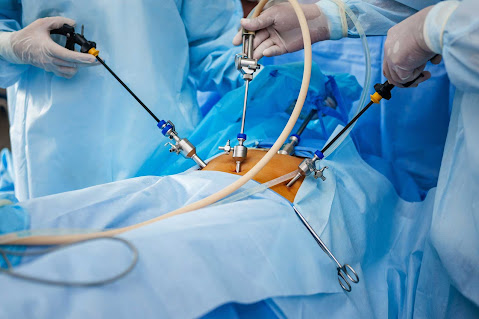Your Laparoscopic Myomectomy Guide: Removing Uterine Fibroids Safely
If you’ve been diagnosed with uterine fibroids, a
laparoscopic myomectomy is an effective way to remove them safely and quickly.
This minimally invasive procedure is performed by a laparoscopic surgeon in Indore who makes small incisions in the
abdomen and uses specially designed instruments to remove the growths from your
uterus. It’s often recommended for women who plan on having children since it
preserves fertility while eliminating painful symptoms caused by fibroids.
This guide will provide you with all the information you need
about what happens before, during, and after your surgery so that you can be as
prepared as possible when it comes time for your procedure.
Before Your Surgery: Before undergoing any kind of
medical procedure, it's important that patients receive proper education about
their condition and the treatment options available to them; this includes
understanding potential risks associated with each option they may choose or be
recommended by their doctor. During pre-surgery consultations at our clinic, we
discuss these topics thoroughly so our patients are well-informed prior to making
decisions regarding care plans tailored specifically for them based on
individual needs & preferences! Additionally - make sure not only have
discussed but also understood all instructions given such as fasting needed
requirements or medications ahead of time (if applicable).
During Your Surgery: Laparoscopy requires general
anesthesia, which means that while under sedation, there won't be feeling pain
during the removal process, however patient should still expect some discomfort
post-op due recovery period itself, typically lasting anywhere from 1-2 weeks
depending upon severity/location(s) where tissue has been removed from within
uterus wall(s). After the initial consultation appointment, where we explain
details including the expected timeline following surgery day arrives--our team
will then perform the necessary steps required to complete the operation
successfully without complications afterward! The entire process usually takes
one hour fifteen minutes to two hours, depending upon the complexity case being
treated. Once completed, the patient will then wake up back room, monitored
closely until fully awake again, ready to go home the same day (or the next
morning, if an overnight stay was requested beforehand).
Also Read: Obstetrician in Indore
After Your Surgery: Following successful completion
& recovery periods, there are a few things worth noting to help ensure the
best outcome possible, long-term health - firstly avoid strenuous activities
like lifting heavy objects running etc. Secondly, keep incision sites clean and
dry; always wear comfortable clothing to reduce risk infection. Thirdly, take
prescribed medication regularly, follow up appointments scheduled accordingly.
Fourthly, attend regular checkups, monitor progress fifthly, contact us
immediately if notice any signs, unusual behavior.




Comments
Post a Comment